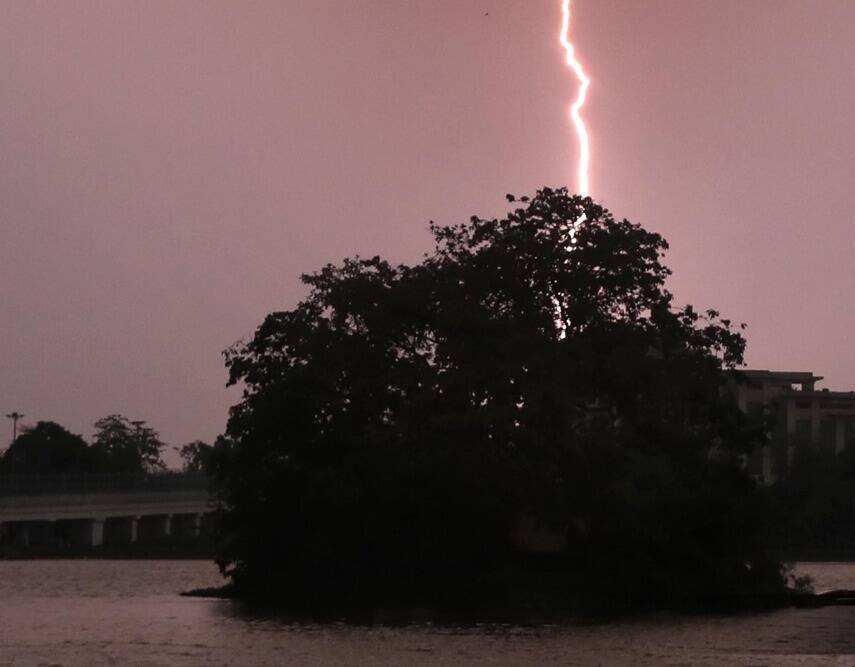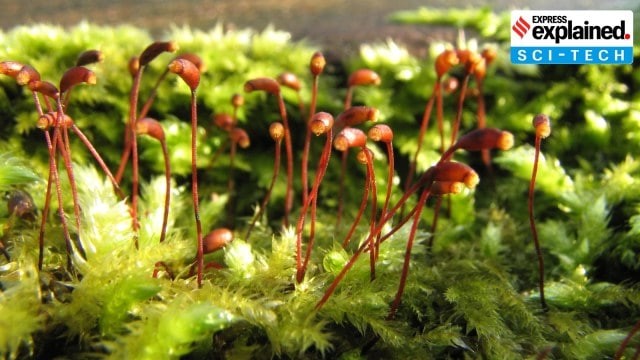Description

Disclaimer: Copyright infringement not intended.
Context: Climate change might lead to more wildfire-inducing ‘hot lightning’ strikes: a new study says
Details:
- Soaring global temperatures could lead to more “hot lightning” strikes in many parts of the world, a new study has found.
- It added that this type of lightning is more likely to ignite wildfires than typical lightning.
- According to the researchers, lightning is a major cause of triggering wildfiresand is responsible for producing the largest wildfires in some regions, including the Western United States.
- Lightning-caused wildfires are dangerous as they spread rapidly before a strong response can be implemented and release substantial amounts of carbon, nitrogen oxides and other trace gases into the atmosphere.
.jpeg)
What are the findings of the latest study?
- The researchers analysed lightning-ignited fires based on satellite images of US wildfires and found that approximately 90 per cent of them might have started by “hot lightning” strikes. Also known as long continuing current (LCC), this type of lightning strike can last from around 40 milliseconds to nearly a third of a second.
- Lightning with continuing currents can transport more energy from cloud to ground than typical lightning.
- When lightning with continuing currents attach to ground or vegetation, they produce more Joule heating and higher temperature than typical lightning, increasing the probability of ignition.
- According to the study, the areas that might witness a significant increase in wildfires triggered by the LCC strikes are Southeast Asia, South America, Africa, Australia, North America and Europe.

What is lightning and how does it occur?
- Lightning is a rapid and massive electrical discharge that takes place between storm clouds and the ground, or within the clouds themselves.
- Scientists believe that for lightning to occur, positive and negative charges must separate within a cloud.
- This happens, when the water droplets in the bottom part of the cloud are moved upwards, where the much colder atmosphere freezes them into small ice crystals.
- As these small ice crystals continue to go up, they gain more mass and eventually become so heavy that they start to fall down to Earth.
- This causes a system in which ice crystals going down collides with the water vapours coming up, leading to the accumulation of positive charges on the top of the cloud and negative changes gathering at the base, while the atmosphere between them in the cloud acts as an insulator.
- When the positive and negative charges grow large enough, their strength overpowers the insulating properties of the properties.
- As a result, the two kinds of charges meet with each other and produce lightning.
- Although most of the lightning takes place within the clouds, sometimes it is directed towards Earth also.
- With the base of the cloud becoming negatively charged, positive charges start accumulating on tall objects, like trees, poles and buildings.
- A ‘stepped leader’ of negative charge descends from the cloud seeking out a path toward the ground. As the negative charge gets close to the ground, a positive charge, called a streamer, reaches up to meet the negative charge. The channels connect and we see the lightning stroke.
Read more: https://www.iasgyan.in/daily-current-affairs/wildfires-2
|
PRACTICE QUESTION
Q) What is hot lightning? Discuss its role in causing wildfires. (150 words)
|

https://indianexpress.com/article/explained/explained-climate/climate-change-wildfire-hot-lightning-strikes-8482578/












